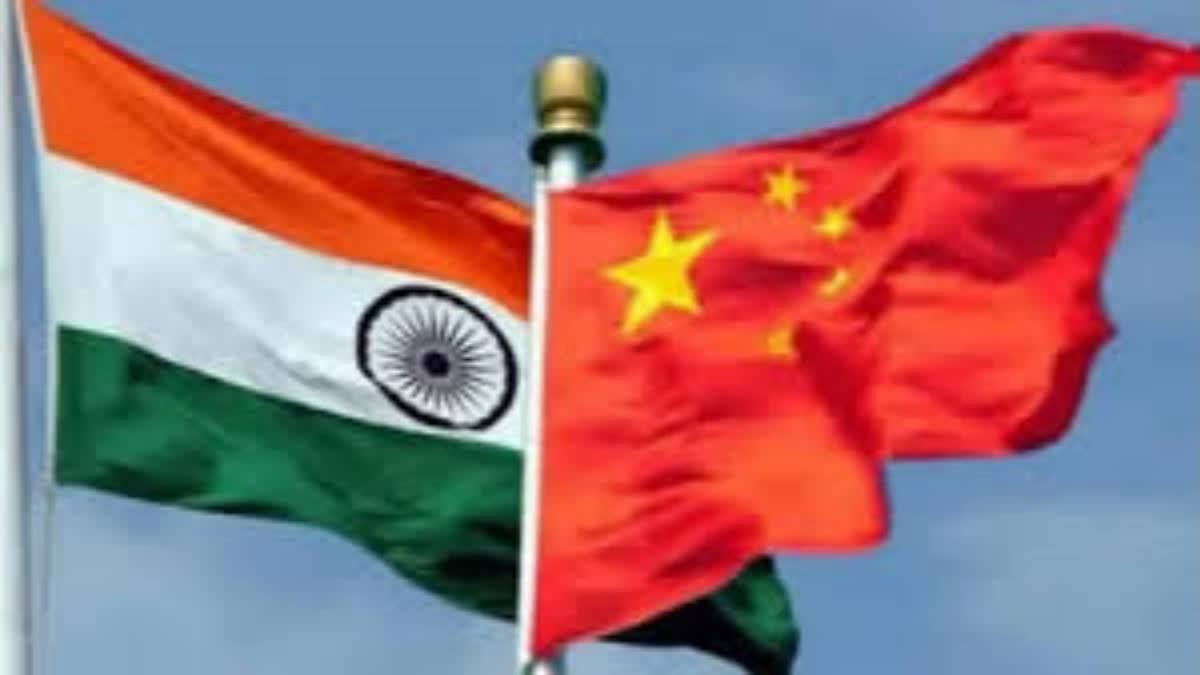New Delhi: Days after India and China reached an agreement to end the border stalemate in eastern Ladakh, a leading Chinese publication stated that the two Asian neighbours will “cherish the valuable solutions” after bilateral ties “have gone through four years of twists and turns”.
In an editorial headlined ‘New developments in China-India relations require sustained nurturing and consolidation’, the Global Times, the English daily that is widely perceived to be a mouthpiece of the hawkish elements within the Communist Party of China (CPC), stated that the agreement “reflects a shared understanding between China and India regarding the need for stability and development in the bilateral relationship, showcasing both countries’ commitment to resolving differences through peaceful consultation”.
The long-running Sino-Indian border dispute revolves around the sovereignty of several sizable and smaller pieces of territory situated between China and India. The India-China border, known as the Line of Actual Control (LAC), stretches over 3,488 km across the Himalayas.
Since the eruption of the eastern Ladakh border standoff on May 5, 2020, following a violent clash between troops of both sides in the Pangong Tso Lake area, relations between India and China have gone into a deep freeze, except for trade ties.
However, ahead of the BRICS (Brazil, Russia, China, India, South Africa) Summit in Russia this month, India announced that it has reached an agreement with China for disengagement along the border in eastern Ladakh.
“I can share with you that over the last several weeks, Indian and Chinese diplomatic and military negotiators have been in close contact with each other in a variety of forums,” Foreign Secretary Vikram Misri said during a media briefing ahead of Prime Minister Narendra Modi’s visit to Kazan, Russia, for the Summit. “As a result of these discussions, the agreement has been arrived at on patrolling arrangements along the Line of Actual Control in the India-China border areas, leading to disengagement and a resolution of the issues that had arisen in these areas in 2020. And we will be taking the next steps on this.”
Misri said that both sides have been in discussions at a diplomatic level through the Working Mechanism for Consultation and Coordination (WMCC) on India-China border affairs as well as through meetings of the military commanders at various levels.
“Now, as a result of the discussions that have taken place over the last several weeks, an agreement has been arrived at on patrolling arrangements along the Line of Actual Control in the India-China border areas and this is leading to disengagement and eventually a resolution of the issues that had arisen in these areas in 2020,” he said.
Following this, Modi and Chinese President Xi Jinping held a bilateral meeting on the sidelines of the BRICS Summit, their first such meeting in five years. During the meeting, Modi said that “mutual trust, mutual respect, and mutual sensitivity should continue to be the basis of our relations”. On his part, Xi urged both China and India to facilitate each other’s pursuit of development aspirations. Xi said the two sides should strengthen communication and cooperation, and properly manage differences and disagreements.
Though the meeting and the comments by the two leaders have set off speculations in the media about whether the border issue between the elephant and the dragon has finally been resolved, there has also been scepticism about whether Beijing will walk the talk.
It is in this context that the editorial in the Global Times is of interest to observers. It states that the agreement “has set up a positive image of rationality, restraint and patience between the two neighbouring major countries in resolving border issues through pragmatic negotiations and consultations in this turbulent world”.
“This progress not only helps to break the long-standing stalemate in China-India bilateral relations, laying a foundation for the normalisation of cooperation across various fields but also effectively responds to the earnest hopes of the international community for stable development in China-India relations,” it further states.
At the same time, it noted that there are cautious voices in public opinion suggesting that the developments are just “a first step”.
“This reminds us that while the deadlock has been broken and a return to normalcy is anticipated, bridging gaps and rebuilding trust will take time and patience,” the editorial states. “The turbulent and interwoven world not only exerts an important impact on China-India relations that goes beyond the bilateral scope but also adds more external uncertainties to the stable development of China-India relations. It calls for greater wisdom for both sides in solving problems.”
So, what exactly is the message that Beijing is trying to send if one goes by the Global Times editorial? “If we have to go by the pre-2020 status quo ante, China has to accept India’s stand,” Harsh V Pant, Professor of International Relations with King’s India Institute at King’s College London and Vice-President (Studies and Foreign Policy) at the Observer Research Foundation think tank, told ETV Bharat.
Pant said that India’s message all this while has been that peace and tranquillity along the border are essential for good neighbourly relations. “India’s core argument has been accepted (by China),” he said.
Referring to the Global Times editorial, Pant said that the Chinese government wants to explain to its people how it decided to come to this agreement with India.
“That is why they have been relatively quiet about this,” he explained. “India is on target. They have accepted it.” According to MS Prathibha, Associate Fellow at the East Asia Centre in the Manohar Parrikar Institute of Defence Studies and Analyses, both countries have conducted a series of negotiations to iron out all the irritants.
“From the Chinese perspective, both countries have invested a lot to agree,” Prathibha said. “So now, trust should be rebuilt and concrete steps should be taken to achieve normalcy. The Chinese side also wants to strengthen strategic communication between the two countries.”
She further stated that from the Indian perspective, New Delhi wanted disengagement before returning to normalcy. “And India has achieved it,” Prathibha said, echoing Pant’s view.
Abhinav Pandya, founder, director and CEO of the Usanas Foundation think tank said that the Global Times editorial is a “very balanced piece”.
“This is a sensible statement from the Chinese quarters,” Pandya told ETV Bharat. “This thaw will provide stability in bilateral relations. It is a welcome and rare development in a turbulent world.”
He said that India-China bilateral relations are rooted in civilisational ties. “We must look forward with a positive attitude,” he said. “It is of importance for South Asia too.”
Describing the Global Times editorial as giving a sense of reassurance, Pandya said: “We expect that the comments are followed by concrete policy actions.”



